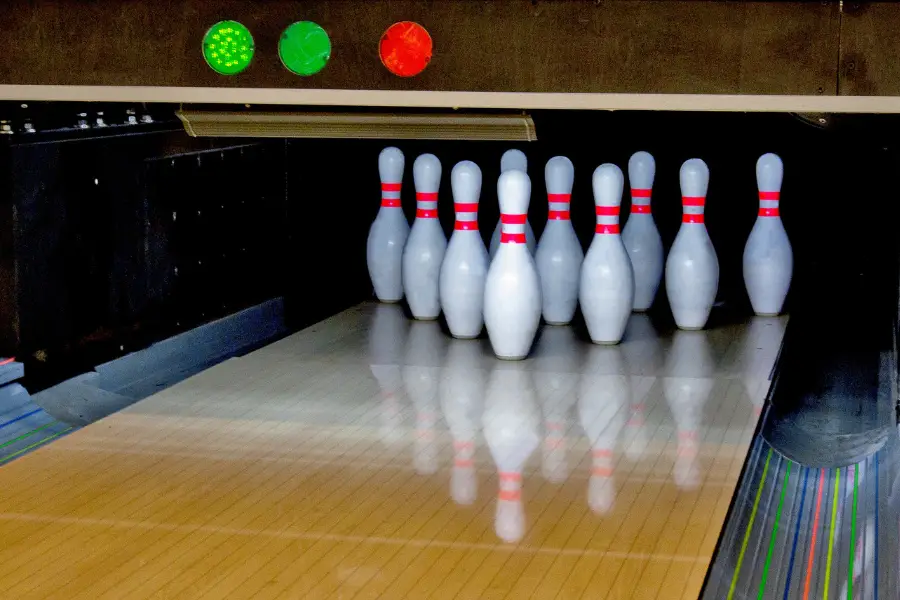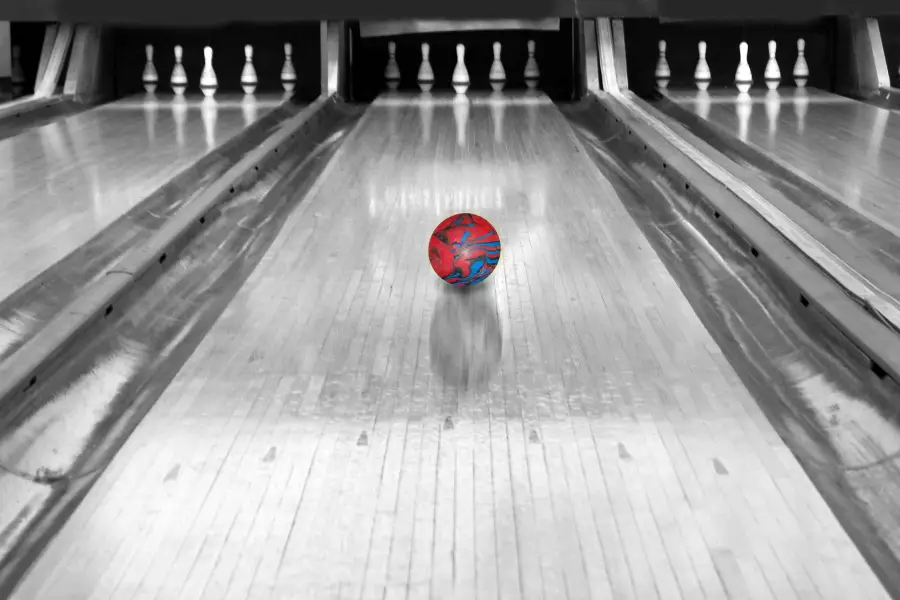
Introduction
Welcome to the fascinating world of bowling, a sport steeped in tradition and enjoyed by millions worldwide. Have you ever paused to wonder how many bowling pins are there on that polished wooden lane? Whether you’re an avid bowler or someone curious about this popular pastime, understanding the various aspects of the game can enhance your appreciation for it.
This blog post will provide insightful details about bowling pin counts across different formats, their physical characteristics, as well as some interesting trivia related to these little-known components of bowling.
Key Takeaways
- The number of bowling pins used depends on the specific format of the game, with ten pins being used in ten-pin, candlepin, and duckpin bowling.
- Nine – pin bowling is a unique variation where players aim to knock down nine pins arranged in a diamond shape.
- Five – pin bowling, primarily played in Canada, uses only five pins instead of the traditional ten and requires precision and accuracy to knock them all down.
How Many Pins Are Used In Bowling?
In bowling, the number of pins used depends on the game format, with ten pins used in ten-pin, candlepin, and duckpin bowling.
10 Pins In Ten-pin, Candlepin, And Duckpin Bowling

In the realm of bowling, different variations of the game call for differing numbers of pins. One notable similarity, however, is that between Ten-pin, Candlepin, and Duckpin bowling all featuring a setup consisting of 10 pins.
Known as “tenpins,” these pin setups are geometrically arranged at the end of the lane in an equilateral triangle pattern. This configuration is typically automated by a machine named the pinsetter – an engineering marvel that adds smoothness to bowling transitions.
The variations in games like Candlepin and Duckpin still incorporate ten pins but change other aspects such as ball size or pin design, offering different challenges to keen bowlers hungry for variety.
Bowling’s intricate details extend far deeper than simple numbers might suggest.
9 Pins In Nine-pin Bowling
Nine-pin bowling is a unique variation of the sport, where players aim to knock down nine pins instead of the traditional ten. It originated in Europe and remains popular in some regions today.
The game is known for its challenging pin arrangement, which features nine pins positioned in a diamond shape with one pin at the center and four on each side.
Unlike other bowling formats, there are no corner pins in nine-pin bowling, making it an interesting and strategic choice for bowlers looking for something different.
Players must adjust their aiming technique to accommodate this distinct pin setup, adding an extra level of skill and precision to the game.
5 Pins In Five-pin Bowling

Five-pin bowling is a unique variation of the sport that uses, as the name suggests, five pins instead of the traditional ten. This form of bowling is mainly played in Canada and has its own set of rules and techniques.
The smaller number of pins adds an extra level of challenge to the game, as each pin carries more weight towards your final score.
The design and dimensions of these smaller pins are also different from their larger counterparts. They are shorter and squatter than ten-pin bowling pins, making them harder to hit directly without deflecting off one another.
Despite their size, five-pin bowling pins are made using durable materials to withstand repeated impacts from balls.
In summary, while most bowlers are familiar with the classic ten-pin setup, there is a lesser-known version called five-pin bowling that uses only five pins.
The Design And Dimensions Of Bowling Pins
Bowling pins have a distinct shape and size, with a height of 15 inches and a weight of approximately 3.5 pounds.
Description Of The Shape And Size Of Bowling Pins
Bowling pins are cylindrical in shape, standing at approximately 15 inches tall and measuring around 4.75 inches in diameter at the widest point.
They have a narrow neck that tapers upwards towards the top, providing stability and resisting easy tipping over when struck by a bowling ball. The bottom of the pin is known as the base or foot, which is usually wider to ensure proper balance.
These pins are typically made from solid wood, most commonly maple or birch, although synthetic materials like plastic or resin may also be used.
Bowling pins come with different weight variations but generally weigh around three and a half pounds each on average.
The classic design of bowling pins has remained relatively unchanged throughout history due to its effectiveness in being knocked down by bowling balls while remaining upright long enough for accurate scoring assessment.
Understanding these key characteristics helps bowlers perfect their technique and aim more accurately while appreciating the craftsmanship required to create these essential elements of every thrilling frame played on any given night at your favorite local bowling alley.
Materials Used In Manufacturing Bowling Pins
Bowling pins are crafted using a combination of materials to ensure durability and stability during gameplay. The most common material used for bowling pins is a type of hardwood, typically maple or birch.
To enhance the longevity of the pins, they are often coated with a thin layer of plastic or urethane. This protective coating helps prevent damage from contact with bowling balls over time.
In recent years, manufacturers have also experimented with using synthetic materials in pin construction.
While traditional wooden pins remain popular in most bowling centers, these newer synthetic options have gained some traction due to their enhanced performance characteristics and extended lifespan.
When manufacturing bowling pins, attention is given not only to selecting high-quality materials but also achieving precise dimensions and weight distribution throughout each pin.
Overall, the careful selection of materials combined with meticulous craftsmanship ensures that today’s modern bowling pins can withstand repeated impacts while delivering optimal results during every game.
Unique Designs And Variations Of Bowling Pins
Bowling pins may seem like simple objects, but they actually come in a variety of unique designs and variations.
For example, you might come across pins with different colors or patterns painted on them for added visual appeal.
In addition to visual enhancements, manufacturers have also experimented with different materials for bowling pins. Traditional wooden pins are still widely used today, but synthetic materials like plastic or composite materials have become more common as well.
Finally, there’s also an interesting variation called “mini-pins” that can be found in certain types of bowling games.
Whether it’s through eye-catching designs, alternative materials, or unique sizes, the world of bowling has seen some fascinating variations in its timeless target: the humble bowling pin.
The Evolution Of Bowling Pin Counts
Bowling pin counts have undergone several changes and modifications throughout history, with games using anywhere from 3 to 17 pins in the past.
History Of Bowling Pin Counts
Bowling has a rich history that spans centuries, and the number of pins used in the game has evolved over time. In the early days of bowling, there was no standard number of pins.
Games could use anywhere from 3 to 17 pins depending on local variations and regional rules.
It wasn’t until the late 1800s that ten-pin bowling became popular in America, and it quickly became the most widely played form of the game. Ten-pin bowling uses..
Interestingly, other variations like candlepin and duckpin bowling also adopted the use of ten pins. Candlepin is primarily played in New England while duckpin is found along the East Coast.
In contrast, nine-pin bowling emerged as an alternative to prohibitively long lanes in Europe during medieval times.
Overall, understanding the history behind different pin counts adds depth to your appreciation for this beloved sport’s origins and evolution over time.
Changes And Modifications To The Standard Pin Count
Over the years, there have been various changes and modifications to the standard pin count in bowling. These alterations have added excitement and challenges to the game, keeping bowlers on their toes. Here are some interesting changes and modifications to the pin count:
- Five-Pin Bowling: Invented in Canada, five-pin bowling is a unique variation that uses only five pins instead of the traditional ten. The smaller pin count requires bowlers to adjust their technique and aim more accurately.
- Candlepin Bowling: Popular in New England, candlepin bowling uses thinner and taller pins compared to ten-pin bowling. With a total of ten pins like ten-pin bowling, candlepin offers a different challenge due to the pin design.
- Duckpin Bowling: Originating in the United States, duckpin bowling uses shorter and squatter pins than regular ten-pin bowling. The smaller pins make it harder for bowlers to achieve strikes or spares, making each throw more critical.
- Nine-Pin Bowling: Nine-pin bowling is common outside of North America and uses nine pins instead of ten (like ten-pin). It adds an intriguing twist by removing one pin from the standard setup.
- Mini-Bowling: Mini-bowling alleys often found in arcades or entertainment centers typically feature fewer pins due to space limitations. These miniature versions usually have six or seven pins per frame, adding a fun twist on traditional bowling.
- Special Events: Occasionally, special events may introduce temporary modifications to the standard pin count for added excitement or fundraising purposes. For example, charity events may reduce or increase pin counts as part of unique challenges.
These changes and modifications diversify the game of bowling by introducing new rules and strategies that keep players engaged and constantly improving their skills. Whether you enjoy traditional ten-pin bowling or prefer trying out different variations with fewer pins, each format offers its own set of thrills and challenges.
Fun Facts About Bowling Pins
Bowling pins have a rich history and there are some fascinating facts about these integral components of the game.
- Modern-day bowling pins are designed specifically to withstand the force of a rolling ball.
- Bowling pin colors also hold significance. In official tournaments, you’ll find white pins at the front and red ones in the back row.
- For those curious about numbers, each standard bowling alley features ten carefully arranged pins in a triangular shape known as “the rack”.
These fun facts add depth to our understanding and appreciation for this beloved sport’s long-standing tradition.
Video
Spoiler alert: There are 10 Bowling Pins! This video shows you which is which…
Conclusion
In conclusion, the number of bowling pins used depends on the specific bowling format. Ten-pin, candlepin, and duckpin bowling all use ten pins, while nine-pin bowling uses nine pins, and five-pin bowling uses five pins.
Bowling pin dimensions vary but they are typically made of sturdy materials and designed with stability in mind. Bowling pin counts have evolved over time, with changes to the standard count and unique variations in different regions.
Regardless of the number of pins used, knocking them all down with a single throw is every bowler’s goal for a strike.
FAQ’s
The standard game of bowling consists of ten pins.
No, the number of bowling pins remains consistent across various games and formats.
The number ten was chosen for convenience and balance when designing the sport of bowling. It provides an optimal level of challenge without being too difficult or too easy.
While it is possible to set up custom variations with fewer or more than ten pins for recreational purposes, official competitive play always uses ten-pin configurations.

